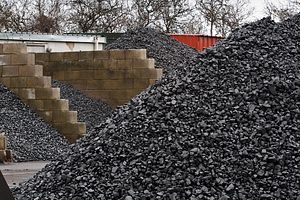As the rest of the world moves away from using coal as an energy source due to its high emission of greenhouse gas, in China the use of coal, the country’s main energy source, is predicted to reach 4.8 billion metric tons per year by 2020, up from 3.5 billion tons in 2012.
The prediction was made by China National Coal Association vice president Liang Jiakun, who stated that the country’s coal industry still has potential to grow, as it now accounts for more than 60 percent of the country’s primary energy resources.
According to the International Energy Agency, China is the world’s second largest oil consumer behind the United States, and the largest global energy consumer. Driving China’s relentless use of energy are demographic and economic considerations. China is the world’s most populous country and has a rapidly growing economy, which has driven the country’s high overall energy demand and the quest for securing energy resources. The International Monetary Fund estimates that China’s real gross domestic product grew at an estimated 9.2 percent in 2011 and 7.8 percent in the first half of 2012, after registering an average growth rate of 10 percent between 2000 and 2011.
According to the U.S. government’s Energy Information Administration, China is also the world’s largest top coal producer and consumer and accounted for about half of the global coal consumption, an important factor in world energy-related CO2 emissions. In 2009 coal supplied 70 percent of China’s total energy consumption of 90 quadrillion British thermal units (Btu).
The Chinese government set a target to raise non-fossil fuel energy consumption to 11.4 percent of its energy matrix by 2015 as part of its new 12th Five Year Plan. EIA projects coal’s share of China total energy mix to fall to 59 percent by 2035 due to anticipated higher energy efficiencies and China’s goal to reduce its carbon intensity (carbon emissions per unit of GDP) but the EIA cautions, “However, absolute coal consumption is expected to double over this period, reflecting the large growth in total energy consumption.”
In 2011 the World Energy Council estimated China’s recoverable coal reserves at 128 billion short tons, the third largest in the world exceeded only by the United States and Russia Federation, equivalent to about 13 percent of the world’s total coal reserves. Chinese coal consumption is now roughly 300 percent higher than it was in 2000, reversing the decline seen from 1996 to 2000, with more than half of China’s coal being used for power and heat generation. This soaring, relentless demand has meant that, despite its enormous reserves, China became a net coal importer in 2009 for the first time in over two decades.
Accordingly, the Chinese government is seeking to tighten its oversight of the vast but heavily polluting industry that remains crucial to its economic development. On November 28 China’s State Council made public a proposal urging the country’s major corporations to manage the economic development and environmental consequences of the mining industry in favor over smaller mining operators, with the government commenting that it would “encourage the consolidation of coal companies, with… large-scale modern coal mines…”.
In making a pragmatic choice to continue with coal for the present, China is also facing a substantial environmental and human price tag for the decision. In 2012 China’s coal industry recorded 1,384 fatalities, and state news agency Xinhua cited a report by Beijing municipal health bureau which noted that among Beijing’s 26 million inhabitants, the number of lung cancer patients per 100,000 people was 39.56 in 2002, but had jumped to 63.09 by 2011. Seeking to put the figures in context, Beijing health officials said that the capital’s increase in lung cancer rates was linked to lifestyle choices, with smoking and passive smoking, but conceded that air pollution could also be a factor.
In a stunning display of worsening air quality in the nation’s financial center Shanghai, on December 6 municipal authorities reported that the city’s air quality index worsened to more than eight times the national limit of 75 micrograms per cubic meter, soaring to 602.5 mpcm and enveloping the city in a noxious cloud of smog, forcing the population indoors, causing flights to be cancelled and the government to order cars off the road and factories to cut production.
As China’s use of coal to underpin its dynamic growth continues to rise, it seems inevitable that the cost in environmental and health consequences will grow as well.
This article was originally published at OilPrice.com. It is reprinted with permission.

































